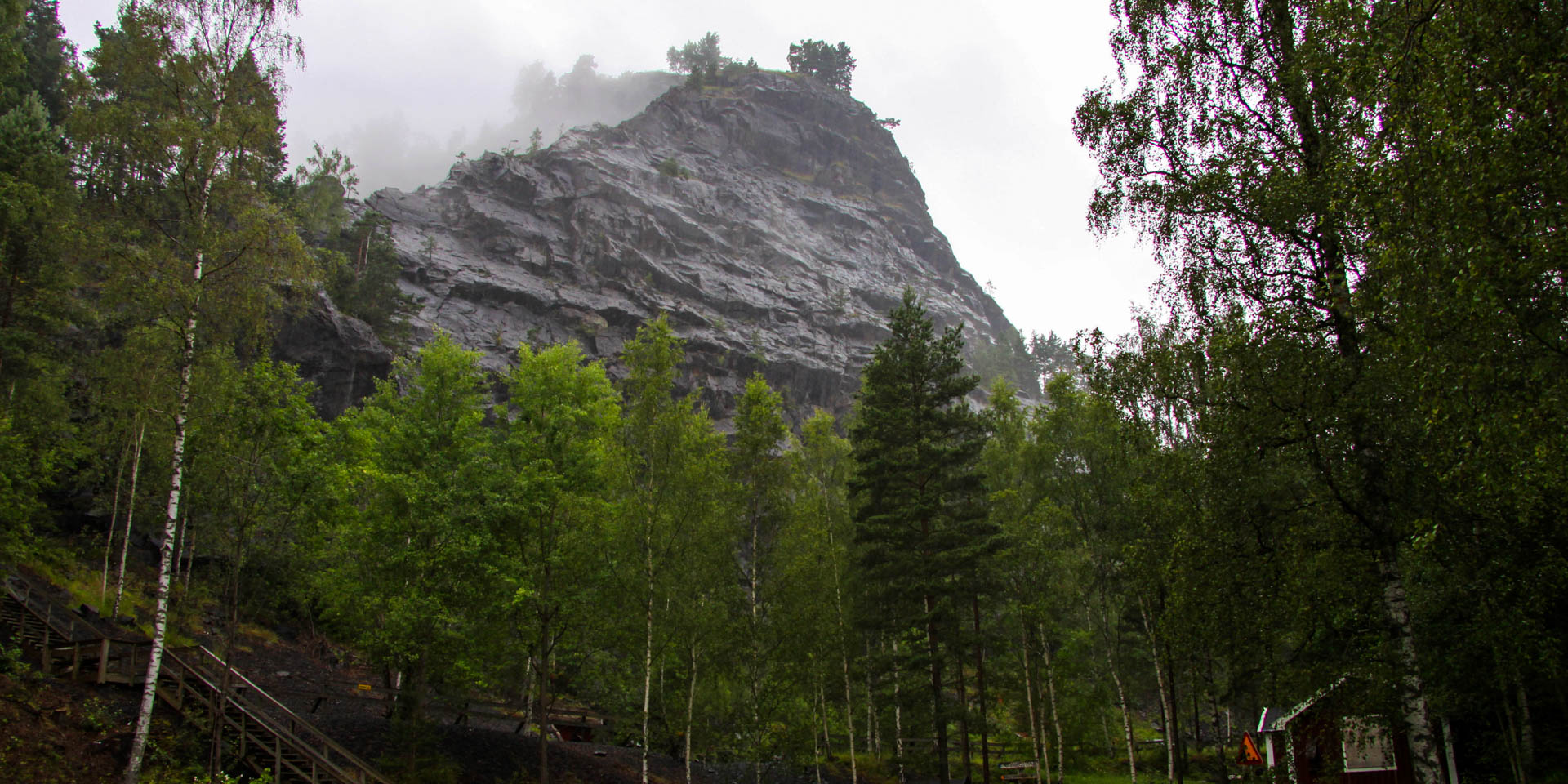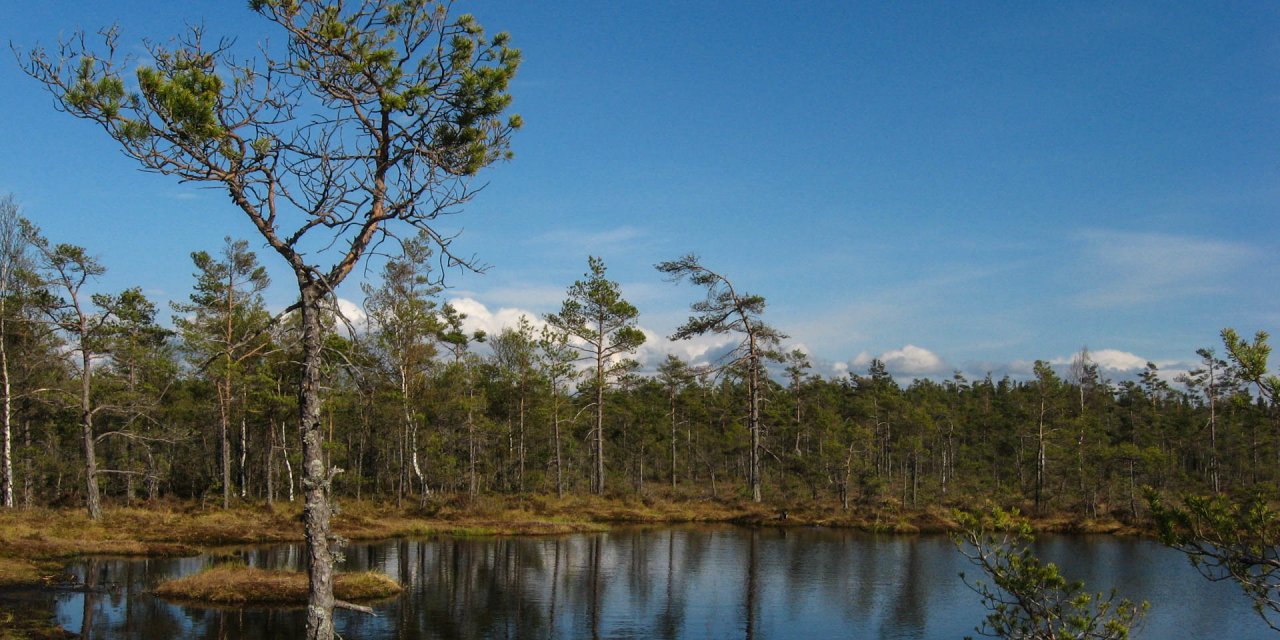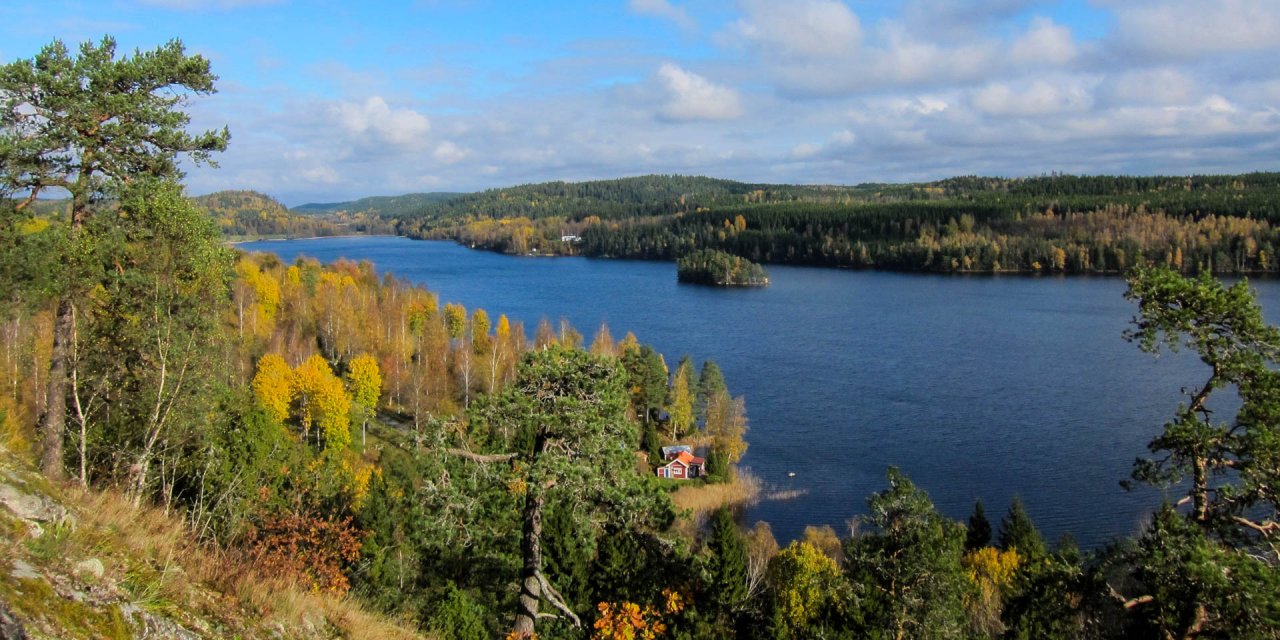

Tabergs Naturreservat
Impressive nature reserve in Taberg
One of the most impressive nature reserves in Småland is the Tabergs Naturreservat in the former mining town Taberg, about 15 kilometres south of Jönköping.
The 68-hectare Tabergs Naturreservat is interesting from a zoological and botanical point of view as well as from a geological and cultural-historical point of view. The nature reserve is located on top of and around the Taberg, which clearly rises 140 metres above the otherwise flat landscape. With a height of 343 metres above sea level, the Taberg is the fifth highest mountain in Småland and offers a clear view of up to 70 kilometres from its peak.
The well-known Swedish biologist Carl von Linné was already so impressed with the biological diversity of the Taberg that after his visit in 1741 he described it as the miracle of Småland (Smålands mirakel). The special importance of the mountain for Sweden can also be seen from the fact that Selma Lagerlöf dedicated a separate chapter to it in The Wonderful Adventures of Nils.
The Taberg and iron ore mining
The Taberg is not just a simple mountain, but one of the very few iron ore mountains in the world. It consists of the rare rock titanomagnetite-olivinite and was formed about 1.2 billion years ago by magma erupting from the inside of the earth. The rock is otherwise only found in Rhode Island, USA. It contains 58 different minerals, including 32 percent of the iron ore magnesite and larger amounts of titanium and vanadium.
On the north and west sides, the mountain flanks are relatively flat, while the south and east sides drop steeply, sometimes vertically, mainly due to iron ore mining since the early Middle Ages. The oldest archaeological findings prove that ore was mined and smelted on the Taberg as early as around 1,000 AD, when iron ore was first mined on the slopes.
Already in the 13th century, the first tunnels were driven into the mountain and the iron from the Taberg quickly became known throughout Europe for its high durability and tenacity. In 1618, the Taberg was officially declared a mining area by royal decree, thus giving the go-ahead for the development of the Jönköping region as a focal point of the Swedish iron industry.
1939, the mine was reopened to produce iron ore for the German weapons industry. It was operated until 1962 and then finally shut down. In order to prevent further mining and the development of ski slopes, the Swedish Society for Nature Conservation bought the mining rights in 1985 and declared the mountain to a nature reserve.
The flora and fauna of the Taberg
About 400 different species of flowering plants and ferns thrive on the Taberg. The weathered stone is also an ideal soil for ferns such as the green spleenwort (Asplenium viride) or the ladder spleenwort (Asplenium adulterinum), which are very rare in Sweden.
With over 300 species, the Taberg is also one of the areas with the highest biodiversity among mosses. These include rare and endangered species such as the green shield-moss (Buxbaumia viridis) or the copper-wire moss (Pohlia nutans).
On the sunlit rocky areas you will encounter the sand lizard (Lacerta agilis), which is quite rare even in southern Sweden due to the climatic conditions. In the 1.5 km long winding tunnels of the abandoned mine six of the native bat species spend the winter and at the small river Tabergsån at the base of the mountain live white-throated dippers dippers (Cinclus cinclus), grey wagtails (Motacilla cinerea) and some common kingfishers (Alcedo atthis).
Explore the Taberg
There are three hiking trails within the nature reserve, on which you can reach the summit from different directions within 15 to 30 minutes. During the summer the south summit and the restaurant and café Tabergstoppen up there can also be reached by car.
From the beginning of June to the end of August, when the bats have left their winter quarters, you can visit the tunnels of the old Tabergs Gruva as part of a one-hour guided tour. The industrial museum Norrahammar on the north side of the mountain offers an interesting permanent exhibition about the history of the iron ore mine and iron production at the Taberg.



